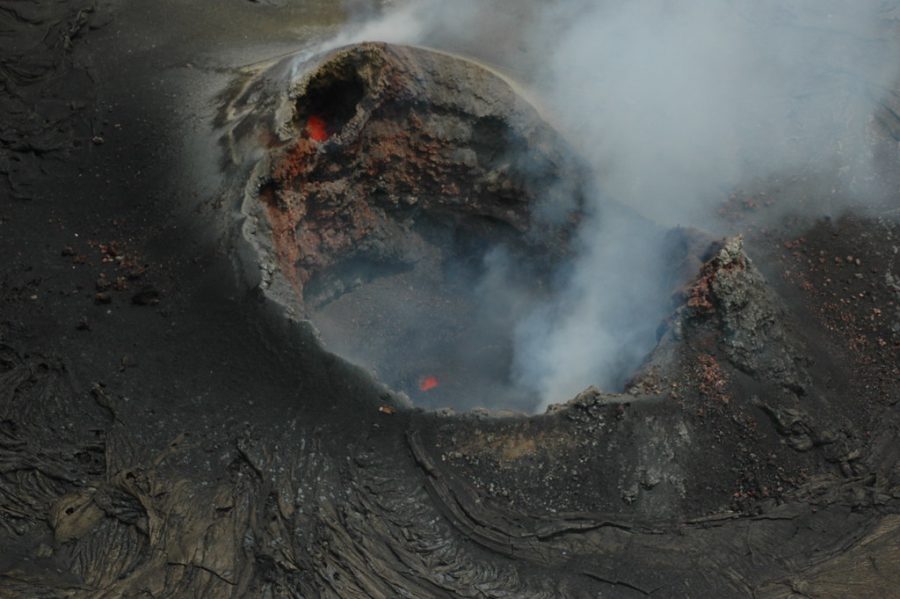Mauna Loa Erupts in Hawaii
December 10, 2022
Hawaii’s Mauna Loa, Earth’s largest active volcano, is awake again after almost 40 years. Mauna Loa abruptly erupted on Nov. 27 and shot fountains of lava as high as 50 meters into the air. Rivers of molten rock streamed down the volcano’s flanks toward Saddle Road—the main highway on Hawaii’s Big Island.
Mauna Loa stands close to four other volcanoes, including the explosively dramatic Kilauea and Mauna Kea. Volcano Kilauea has captivated many scientists in recent years because of its pyrotechnics, while Mauna Loa barely receives public attention.
“The sleeping giant (Mauna Loa) hasn’t been so quiet in the past,” said Ingrid Johanson, a geophysicist from the U.S. Geological Survey’s Hawaiian Volcano Observatory in Hilo to Science News.
Historically, Mauna Loa has erupted every seven years on average. The last stretch between eruptions for the mountain has been longer than seven years, and it had been expected to erupt.
The eruption of Mauna Loa did not immediately endanger the towns, but the U.S. Geological Survey warned the 200,000 people living on the Big Island that an eruption from the volcano could be “dynamic, and the location and advance of lava flows can change rapidly,” according to a report from AP News.
Officials told residents to be prepared to evacuate if lava flowed toward populated areas. On Nov. 26, residents began to line up on the road as lava flowed down. The eruption moved northeast and spread, with several distinct streams of lava running down the hillside. The eruption began and was followed by a series of large earthquakes.
Officials urged the public to stay away from the lava, which can shoot 100 to 200 feet into the air. Volcanic gasses, primarily sulfur dioxide, are also harmful. Even though the air quality is good right now, careful monitors are still essential. Air quality can deteriorate for about one or two weeks on average.
Everyone across the island should keep track of the eruption because of the need for vigilance. More than a third of the residents live to the west of the volcano or to the east. Subdivisions to the volcano’s south that house about 5,000 people are the most dangerous now and are being monitored specifically.
The eruption had migrated to a rift zone, where the mountain rock is cracked and relatively weak, making it easier for magma to emerge. Scientists hope the flow will slow down eventually and cause less harm.
“I hope that everyone will live through the eruption safely,” said junior Luna Qui.
Even though Hawaii is very far from Arcadia High School, many students still pay attention to the consequences of the eruption and pray for the best outcomes for Hawaiian residents.
Photo courtesy of Flickr

